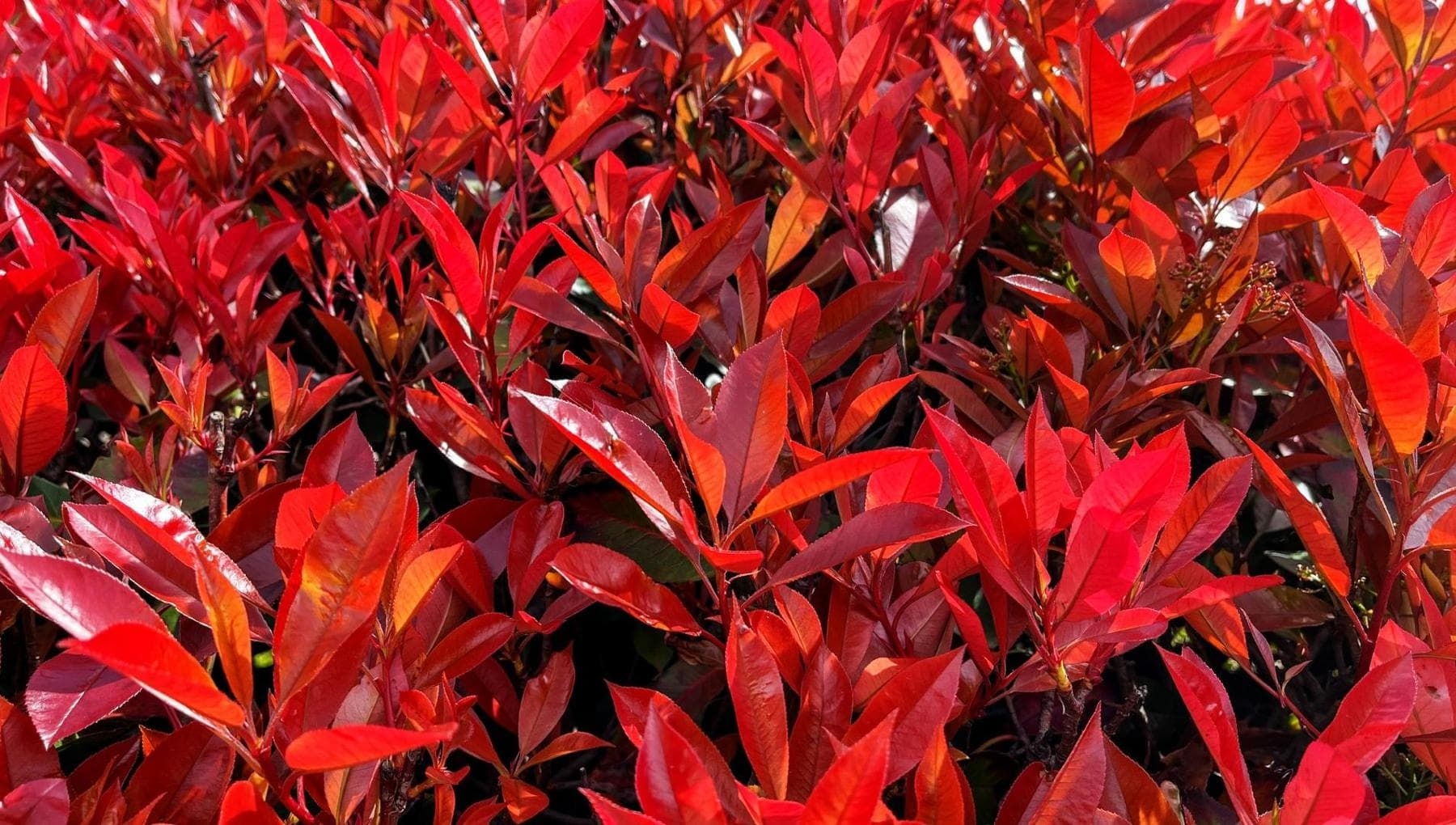Photinia: How to Grow the Plant That Changes Color

The photinia , or photinia , belongs to the Rosaceae family and is native to East Asia, particularly China, Japan, and India. The most common variety is Photinia fraseri, a hybrid resulting from the cross between Photinia glabra and Photinia serratifolia, but the plant itself has become a staple in many Italian gardens: thanks to its deep red young leaves that fade to green , and its ability to transform into an elegant hedge or a striking shrub, it wins over those who love ornamental greenery (which turns red). But how do you grow it properly? When should you prune it? How much does it cost? Let's find out together.
When does photinia turn red? CharacteristicsPhotinia fraseri is a fast-growing evergreen shrub with an erect, branched habit. It can reach a height of 2–4 meters , depending on pruning. Its leaves are oval, glossy, and leathery, dark green with spectacular bright red new growth in spring and early summer. The flowers, clustered in white, fragrant panicles, appear between April and May. Small, inedible red berries may appear in autumn.
How to grow it: exposure, soil and plantingPhotinia thrives in full sun or partial shade: a bright location enhances its foliage and promotes the bright red color of the younger leaves. Fertile, well-drained soil is preferable, avoiding soil that is too compact or prone to waterlogging . If the soil is heavy, it's helpful to mix in compost or light potting soil at planting. Planting can be done from autumn to spring, avoiding the hottest months or periods of frost. Once planted, photinia requires special attention in the first year, with regular watering until it is well established; thereafter, maintenance can be moderate.
When to prune PhotiniaPhotinia pruning deserves special attention: the optimal time to do so is in late winter, early spring, or immediately after flowering , depending on the weather and the variety. Pruning too early (before the new growth has hardened) or too late (close to the first frost) can reduce the aesthetic appeal of the new growth or make the plant more vulnerable. It's not necessary to prune drastically every year: removing dead, diseased, or overly protruding branches and shaping the bush is often sufficient. For very dense hedges, a light trim is recommended, but avoid radical cuts in the fall.
How Much It Grows: Size, Rate, and Varieties of PhotiniaPhotinia is surprisingly vigorous. Under favorable conditions , it can reach 3-5 meters in height and a similar spread if left untended. Some sources indicate that it can even exceed six meters without regular pruning. If grown as a hedge and pruned regularly, however, it can be maintained at 2-3 meters in height without much difficulty . Growth is rapid in the initial period: the key is to contain the foliage in the desired shape from the start, to prevent the plant from becoming too woody and losing vigor at the base.
Diseases and parasites: it is necessary to monitor itOne point not to be underestimated concerns disease: photinia is susceptible to leaf spot , especially in conditions of high humidity and poor air circulation, resulting in leaf loss. To avoid this, it's important to ensure good ventilation between plants , avoid repeatedly wetting the foliage, and, if necessary, apply targeted treatments. Furthermore, keeping pruning tools clean is essential to prevent the spread of fungi or bacteria. Choosing the right time and angle for cutting can make a difference to the plant's health.
La Repubblica





